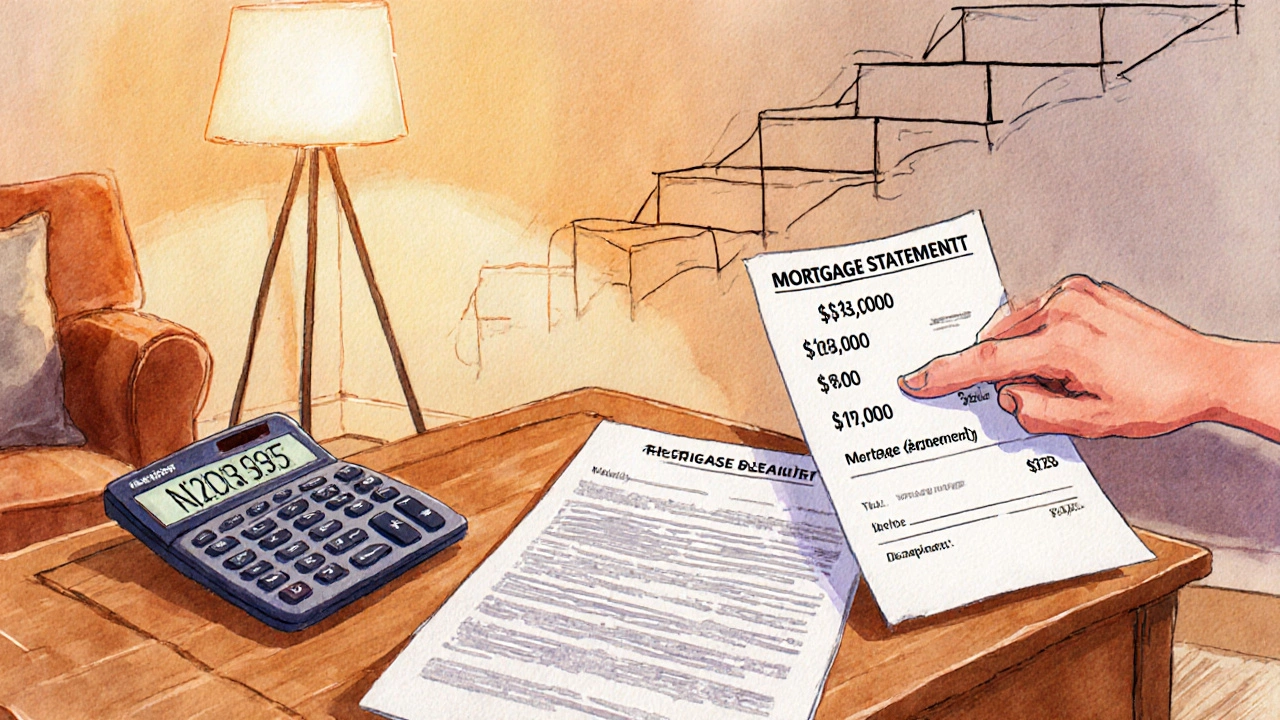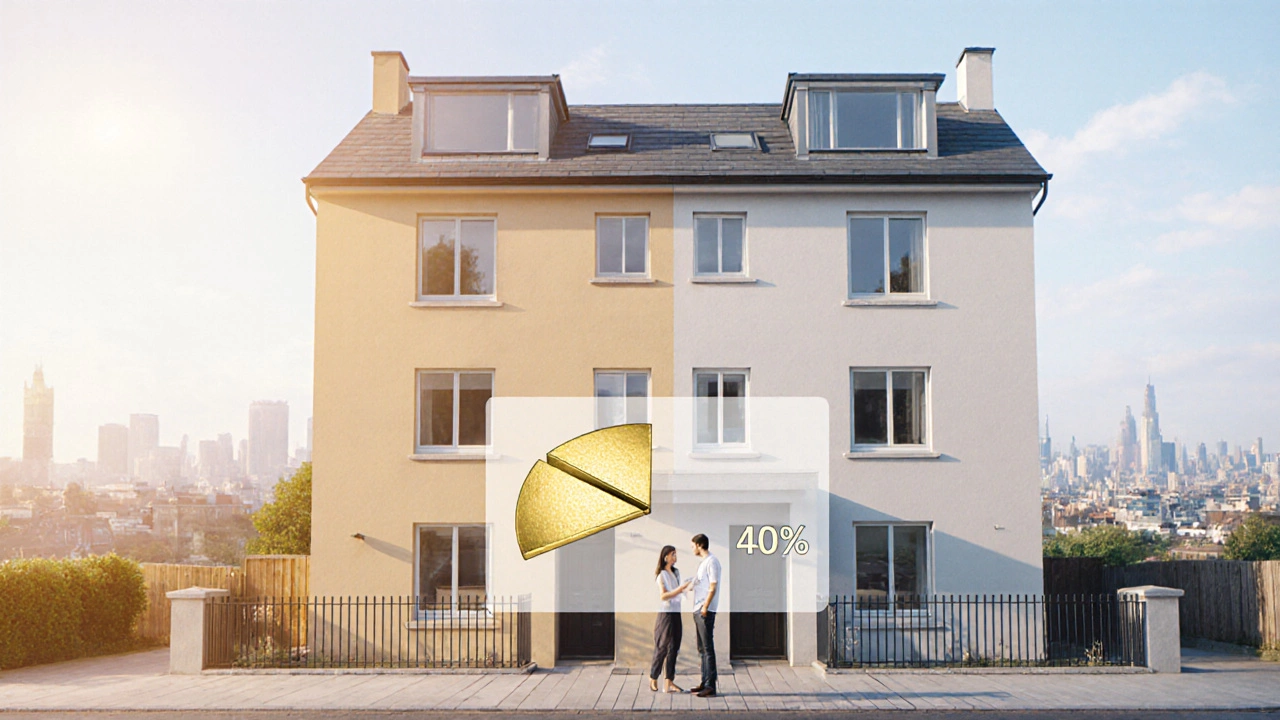Shared Ownership Cost Calculator
Your Shared Ownership Breakdown
Staircasing Preview
After increasing your share by 10%...
Current mortgage remains at $0
Additional cost to staircase: $0
When you hear the term share of ownership is a percentage of a property that you legally own, separate from the portion you rent, you might wonder exactly what that means and how it works in practice. This guide breaks down the concept, the mechanics behind shared‑ownership schemes, and what you need to know before taking the plunge.
What a Share of Ownership Actually Is
A share of ownership represents the slice of a property you purchase outright, usually expressed as 25%, 50% or 75% of the market value. The remaining percentage stays with a housing association or a private developer, and you pay rent on that part. This hybrid model lets you step onto the property ladder with a smaller deposit and mortgage than a full purchase would require.
How a Shared‑Ownership Scheme Works
In a typical shared ownership scheme a government‑backed or housing‑association program that lets buyers purchase a share of a home and rent the rest, the process looks like this:
- Choose the property and decide the percentage you want to buy (often 25%‑75%).
- Secure a mortgage for the purchased share. Lenders assess you based on the loan‑to‑value (LTV) of the share, not the whole property.
- Pay an upfront deposit on the bought share (usually 5%‑10% of its value).
- Rent the remaining share from the housing association, typically at a rate of 2%‑3% of the unsold value.
- Cover service charges, ground rent and insurance, just like any homeowner.
Key Terminology You’ll Hear
- Equity The monetary value of your owned share after any market appreciation or depreciation
- Leasehold The legal right to occupy the property for a set period, common in shared‑ownership homes
- Staircasing The process of buying additional percentages of the property to increase your owned share
- Mortgage A loan secured against the share you own, not the entire property
- Rent on the remaining share A market‑rate rental charge you pay to the housing association for the part you don’t own
- Housing association A not‑for‑profit organisation that holds the unsold share and manages the rental component
- Property valuation An appraisal of the full market value of the home, used to calculate both mortgage size and rent

Calculating the Cost of Your Share
Let’s walk through a real‑world example. Imagine a two‑bedroom flat priced at NZ$500,000. You decide to buy a 40% share.
- Purchase price of your share: 40%×NZ$500,000 = NZ$200,000.
- Deposit (10% of share): 10%×NZ$200,000 = NZ$20,000.
- Mortgage needed: NZ$200,000−NZ$20,000 = NZ$180,000.
- Annual rent on remaining 60%: If the rent rate is 2.5% of NZ$300,000 (the unsold value), you pay NZ$7,500 per year, or NZ$625 per month.
These figures show how the monthly out‑goings can be significantly lower than a full‑mortgage loan on the entire property, especially for first‑time buyers with limited savings.
Staircasing: Growing Your Ownership
As your finances improve, you can staircase by purchasing extra percentages of the property, gradually reducing the rent you owe. The steps typically look like this:
- Request a new property valuation to determine the current market price.
- Decide how much additional share you can afford (e.g., another 10%).
- Secure a second mortgage or use savings to fund the purchase.
- Pay the housing association the purchase price for the new share.
- Watch your rent shrink proportionally.
Many schemes allow you to staircase in increments as small as 5%, making it a flexible way to move toward full ownership.
Buying, Selling, and Transferring Your Share
If you decide to move on, you can sell your owned share on the open market or back to the housing association. The process involves:
- Getting an up‑to‑date property valuation to set a realistic price.
- Marketing the share - many associations maintain a list of interested buyers.
- Ensuring the buyer meets the scheme’s eligibility criteria (often first‑time buyer status).
- Paying any early‑repayment charges on your mortgage, if applicable.
Because you own only a fraction, the sale can be quicker than a traditional house sale, but the pool of buyers may be smaller.
Pros and Cons for First‑Time Buyers
Here’s a quick rundown of the main advantages and disadvantages you’ll encounter.
| Pros | Cons |
|---|---|
| Lower deposit requirement (often 5%‑10% of the share) | Rent is payable on the unsold portion, adding to monthly costs |
| Smaller mortgage size makes approval easier | Restrictions on selling - buyer must meet scheme criteria |
| Staircasing lets you increase ownership gradually | Service charges and ground rent are still your responsibility |
| Potential to benefit from property appreciation on your owned share | Valuation fluctuations can affect how much equity you build |
Key Takeaways
- A share of ownership is the percentage of a property you buy outright while renting the rest.
- Shared‑ownership schemes lower the entry barrier for first‑time buyers by reducing deposit and mortgage size.
- Staircasing lets you gradually increase your owned percentage and shrink rent.
- When selling, you’re limited to buyers who qualify for the scheme, and you may face early‑repayment charges.
- Running costs (service charges, ground rent) still apply even for the owned share.
Frequently Asked Questions
What is the difference between a share of ownership and a full mortgage?
With a full mortgage you borrow against 100% of the property value (minus deposit). A share of ownership means you only borrow against the portion you buy, while you rent the remaining share from a housing association.
Can I choose any percentage to buy?
Most schemes offer 25%, 50% or 75% shares, but some allow increments of 5% or 10% if you plan to staircase later.
How is rent calculated on the unsold share?
Rent is usually set at 2%‑3% of the market value of the portion you don’t own. The exact rate is defined in your lease agreement.
Is staircasing always affordable?
Affordability depends on your income, mortgage eligibility and the current market value. You’ll need a new valuation and possibly a second mortgage to fund the additional share.
What happens to my equity if property values fall?
Your equity - the value of your owned share - will decrease proportionally with the market price. However, your rent on the remaining share will also be recalculated based on the lower valuation, which can offset some impact.
